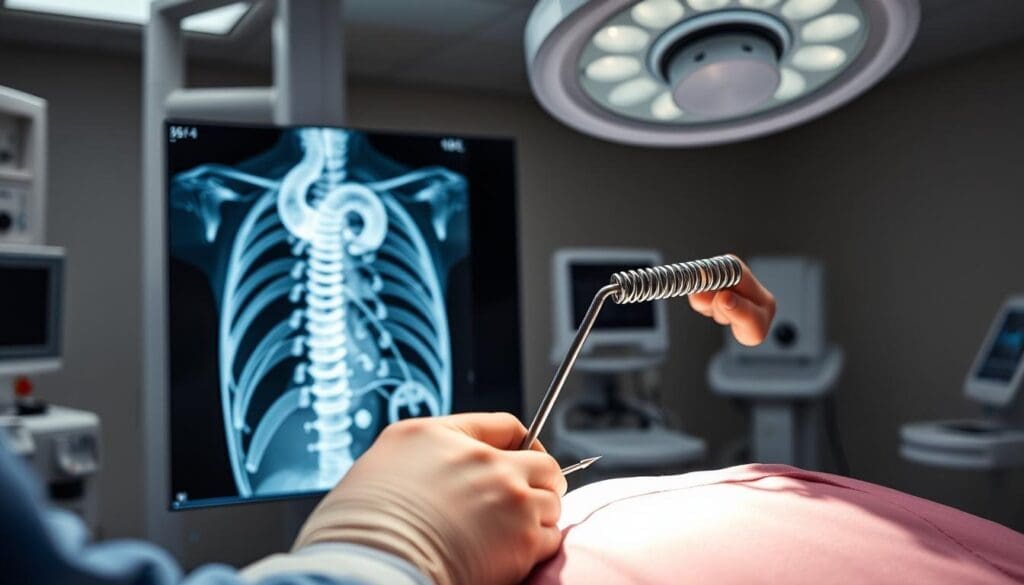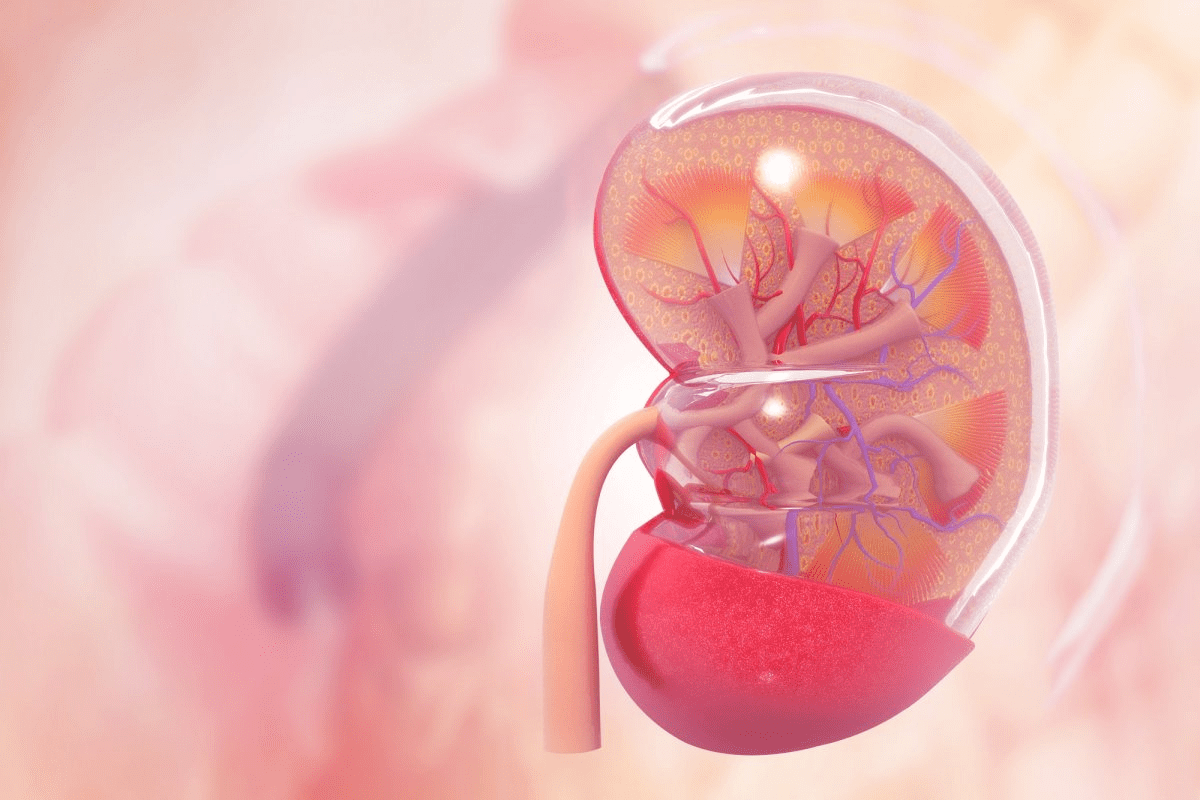Last Updated on November 26, 2025 by Bilal Hasdemir

After getting a heart stent, many patients ask, how soon can you fly after having a stent fitted? At Liv Hospital, we provide trusted, patient-centered guidance on when it’s safe to resume normal activities, including flying and driving, after a heart stent procedure.
Generally, patients can fly safely about 1 to 2 weeks after getting a stent—provided their condition is stable and they have clearance from their cardiologist. Understanding how soon can you fly after having a stent fitted is important, as every patient’s recovery timeline can vary depending on their overall heart health and the type of procedure performed.
Most people can return to light activities, including short drives, roughly one week after the procedure. However, it’s essential to follow your doctor’s advice and avoid overexertion early in the healing process.
At Liv Hospital, our cardiology experts explain how soon can you fly after having a stent fitted and offer personalized recovery plans to ensure safe, confident travel and activity resumption after surgery. Knowing the right precautions helps patients recover smoothly and avoid complications.
Key Takeaways
- Patients can usually fly within 1 to 2 weeks after a stent procedure if they’re stable and get their cardiologist’s approval.
- Normal, non-strenuous activities can be resumed about one week after the procedure.
- It’s important to follow the cardiologist’s advice on when to start activities again.
- The recovery time can vary for each person, and some might need more time.
- Knowing the guidelines for flying and driving after a stent procedure is vital for a safe recovery.
Understanding Coronary Stent Procedures

A coronary stent is a small, mesh tube used to keep arteries open. This allows oxygen-rich blood to flow freely to the heart. It’s a key part of treating heart disease.
What is a Stent and Why is it Needed?
A stent is needed when arteries are narrowed or blocked by plaque. This is called coronary artery disease. It can cause chest pain and heart attacks.
By placing a stent, doctors can improve blood flow. This reduces symptoms and the risk of future heart problems.
The Stent Placement Procedure
The stent placement procedure is done in a catheterization lab. A cardiologist uses a thin, flexible tube called a catheter. It’s inserted through an artery in the leg or arm.
The catheter is guided to the blocked artery. A balloon is then inflated to widen the artery. The stent is deployed, keeping the artery open.
Types of Stents and Their Implications for Recovery
There are different types of stents, like bare-metal and drug-eluting stents. Bare-metal stents are made of metal and keep the artery open. Drug-eluting stents release medication to prevent the artery from narrowing again.
The choice of stent depends on the patient’s health and the blocked artery. Knowing the type of stent used is important for recovery.
| Stent Type | Description | Implications for Recovery |
| Bare-Metal Stents | Made of metal mesh, keeps artery open | Requires dual antiplatelet therapy for at least 1 month |
| Drug-Eluting Stents | Releases medication to prevent re-narrowing | Requires dual antiplatelet therapy for 6-12 months or more |
It’s important for patients to understand their stent type and recovery. Knowing what to expect helps them follow their treatment plan. This reduces the risk of complications.
The Initial Recovery Period After Stent Placement

Knowing about the initial recovery after stent placement is key to success. This early phase is vital for a quick and healthy recovery.
Immediate Post-Procedure Care
Right after the procedure, patients are watched for a few hours for any issues. It’s important to rest and avoid hard work for a week or two. Following the doctor’s advice on meds, check-ups, and lifestyle changes is vital.
Here are some tips for patients:
- Rest and avoid heavy lifting or bending
- Watch the insertion site for infection or bleeding signs
- Stick to the medication plan
Common Side Effects and Complications
Stent placement is usually safe, but there are possible side effects and complications. These include:
- Bleeding or bruising at the catheter site
- Allergic reactions to the stent or meds
- Restenosis (narrowing of the arteries)
It’s important to know the signs of serious problems like chest pain, shortness of breath, or severe bleeding. Seek help right away if you notice these.
| Potential Complications | Symptoms to Watch For | Action to Take |
| Bleeding or Hematoma | Swelling, pain, or bleeding at the catheter site | Apply pressure; contact your doctor |
| Restenosis | Recurring chest pain or discomfort | Consult your cardiologist |
| Stent Thrombosis | Sudden chest pain or severe shortness of breath | Seek emergency medical care |
Fatigue After Stent Placement
Fatigue is common after stent placement, more so after a heart attack. Rest and slowly getting back to normal activities are advised. It’s important to listen to your body and not rush back to hard activities too soon.
Understanding and managing the initial recovery well can greatly improve outcomes and lower complication risks. It’s key to follow medical advice closely and report any unusual symptoms to healthcare providers.
How Soon Can You Fly After Having a Stent Fitted?
After getting a stent, many wonder when they can fly again. The time to fly after a stent depends on the stent type, procedure complexity, and health.
General Medical Guidelines for Air Travel
Medical guidelines say wait a bit before flying after a stent. This wait aims to lower the risk of travel problems.
The 1-2 Week Recommendation Explained
Usually, wait 1 to 2 weeks before flying after a stent. This time lets the body heal and lowers the risk of blood clots. But, the exact wait can change based on your situation.
While waiting, your body starts to mend. The risk of problems like blood clots goes down. Yet, always listen to your cardiologist’s advice. They know your health best.
Importance of Cardiologist Approval Before Flying
Getting your cardiologist’s okay to fly is key. They check if flying is safe for you. Flying can be risky, with air pressure changes and limited medical help.
Cardiologist approval is not just a formality; it’s a critical step in ensuring your safety during air travel.
Factors That May Extend Your Waiting Period
Some things can make you wait longer to fly after a stent. These include procedure complications, heart attack history, or other health issues. If you have these, you might need to wait longer than 1-2 weeks.
- Complications during the stent procedure
- History of heart attack or other cardiac events
- Underlying health conditions that may affect recovery
Also, think about the airline’s rules for recent medical procedures. Some airlines might have special rules for stent patients.
By knowing these factors and following medical advice, you can fly safely after a stent.
Risks of Flying Too Soon After Stent Placement
Flying after a stent is fitted can be risky. It’s important for patients to know these risks to stay safe in the air.
Blood Clot Formation During Air Travel
Flying too soon after a stent can lead to blood clots. Sitting for long times on a plane can cause deep vein thrombosis (DVT). This is dangerous if the clot goes to the lungs.
We suggest patients walk often during long flights. Wearing compression stockings can also help lower this risk.
Potential for Cardiac Events at High Altitude
High altitudes on planes can also be risky for the heart. The lower oxygen levels can put extra strain on the heart. This is a concern for those who have had a stent recently.
Accessibility to Medical Care While Traveling
Another big worry is getting medical help while traveling. If there’s a heart emergency, being on a plane or in a foreign place can make it hard to get help fast.
It’s key for patients to talk to their cardiologist before flying. The table below lists important things to think about for those planning to fly after a stent.
| Risk Factor | Description | Mitigation Strategy |
| Blood Clot Formation | Prolonged sitting can lead to DVT | Regular walks, compression stockings |
| Cardiac Events at High Altitude | Lower oxygen levels can strain the heart | Consult cardiologist, monitor health |
| Accessibility to Medical Care | Difficulty in receiving timely medical attention | Research local medical facilities, travel insurance |
Knowing these risks and taking steps to prevent them can help patients avoid complications from flying too soon after a stent.
When Can You Drive After a Stent Procedure?
After a stent procedure, many patients wonder when they can drive again. The answer varies based on the procedure’s complexity and the patient’s health.
Standard Guidelines for Routine Stent Procedures
For simple stent placements, doctors usually suggest a waiting period before driving. This helps avoid any issues that might affect your ability to drive.
The 2-Day Waiting Period for Uncomplicated Procedures
Mostly, doctors tell patients to wait 2 days (48 hours) before driving after a simple stent procedure. This time allows for initial healing and lowers the risk of problems.
The American Heart Association advises, “Patients should avoid driving for at least 48 hours after stent placement to minimize the risk of cardiac complications.”
“Patients should avoid driving for at least 48 hours after stent placement.”
American Heart Association
How Long After a Stent Can You Drive Without Restrictions?
For most, driving without worries can start in a week to 10 days after the procedure, if there are no issues. But, this can change based on how you recover and your cardiologist’s advice.
| Recovery Stage | Driving Restrictions |
| 0-2 days post-stent | Avoid driving due to risk of complications |
| 2-7 days post-stent | Resume driving with caution, following doctor’s advice |
| After 7-10 days | Typically, no restrictions if recovery is uneventful |
Legal Considerations and Insurance Requirements
Remember, there are legal and insurance rules to follow when driving after a stent procedure. Talk to your healthcare provider and insurance to know what’s needed.
Key Considerations:
- Notify your insurance provider about your stent procedure.
- Understand any legal obligations to report your condition to the DMV.
- Follow your doctor’s advice regarding driving restrictions.
By knowing these guidelines and listening to your doctor, you can safely get back to driving after a stent procedure.
Special Considerations: Driving After Heart Attack and Stent
After a heart attack and stent placement, many wonder when they can drive again. The recovery is not just about physical healing. It’s also about knowing if you can drive safely. We’ll help you understand what to consider when driving after a heart attack and stent.
Extended Recovery Timelines for Post-Heart Attack Patients
Recovering from a heart attack and stent placement takes time. The severity of the heart attack and your overall health matter. Your cardiologist will tell you when it’s safe to drive again. This time can vary based on your situation.
Impact of Persistent Symptoms on Driving Ability
Chronic symptoms like chest pain or fatigue can affect your driving. If you’re feeling these symptoms, talk to your doctor. They can help you know if it’s safe to drive.
When Fatigue Affects Your Ability to Drive Safely
Fatigue is common after a heart attack and stent. It can make driving dangerous. Wait until you feel fully recovered before driving. If fatigue doesn’t go away, see your doctor for advice.
Returning to Normal Activities Gradually
Getting back to normal, including driving, should be slow. Start with short drives and increase the distance as you get better. Always check in with your doctor to make sure you’re recovering well.
| Activity | Guideline | Notes |
| Driving | Wait for cardiologist approval | Typically involves a waiting period |
| Monitoring Symptoms | Report persistent symptoms to your doctor | Important for safe driving |
| Gradual Return to Activities | Start with short drives, increase gradually | Helps in assessing recovery |
Understanding Medical Terminology: PCI vs. Angioplasty vs. Stenting
It’s important for patients to know the difference between PCI, angioplasty, and stenting. These terms are often used when talking about heart disease treatment. But, they can be confusing.
Defining Percutaneous Coronary Intervention (PCI)
Percutaneous Coronary Intervention (PCI) is a non-surgical way to treat narrowed heart arteries. It includes angioplasty and stenting to improve blood flow to the heart.
Coronary Angioplasty Explained
Coronary angioplasty is often called PCI. It uses a balloon to widen narrowed arteries. A catheter is used to guide the balloon to the blockage. Then, the balloon is inflated to push the plaque against the artery wall, improving blood flow.
How These Procedures Relate to Stent Placement
Stenting is a key part of many PCI procedures. After angioplasty, a stent is placed in the artery. The stent keeps the artery open, preventing it from narrowing again and reducing the risk of future blockages.
Common Terminology in Medical Documentation
Medical documents often use terms like PCI, angioplasty, and stenting loosely. This can cause confusion. It’s key for patients to know that while these procedures are related, they are not the same. PCI is the broader category that includes angioplasty and stenting. Angioplasty is the ballooning of the artery, and stenting is the placement of a stent.
In summary, knowing the differences between PCI, angioplasty, and stenting helps patients understand their treatment options and recovery. Talking to healthcare providers about these terms can ensure patients fully understand their care.
Airline Cabin Conditions and Medical Preparedness
The conditions in an airline cabin can affect your health and safety, more so if you’ve had a stent fitted. We’ll look into these conditions and how airlines handle medical emergencies.
Oxygen Levels and Pressure in Aircraft Cabins
Traveling by air means facing unique conditions like lower oxygen and air pressure. Even though planes are pressurized, the pressure is not as high as at sea level. This can affect blood oxygen levels.
For most people, this isn’t a big deal. But for those who’ve had a heart procedure, it might be risky.
It’s wise to talk to your cardiologist before flying. They can tell you about the risks and what precautions you need.
Available Medical Equipment on Commercial Flights
Airlines differ in their medical readiness. Most have basic first-aid kits and AEDs. But, not all have advanced medical tools.
| Airline | AED Availability | Basic First-Aid Kit | Advanced Medical Equipment |
| American Airlines | Yes | Yes | No |
| Delta Air Lines | Yes | Yes | Yes* |
| United Airlines | Yes | Yes | No |
*Advanced equipment available on select long-haul flights.
How Airlines Accommodate Passengers with Recent Cardiac Procedures
Airlines usually help passengers with recent heart procedures. But, the help can vary. It’s best to tell the airline about your condition and get medical clearance.
Some airlines might offer extra support, like more space or special meals.
Talk to your doctor about your travel plans. Also, let the airline know about your condition. This way, you can have a safe and comfortable flight.
Practical Tips for Safe Air Travel After a Stent Procedure
Air travel after a stent procedure needs careful planning. Patients who have had this procedure need help to safely travel again.
Pre-Flight Medical Clearance and Documentation
Get medical clearance from your cardiologist before flying. This ensures you’re ready for air travel after your stent. Carry your medical records, including your procedure details and test results, for airline staff.
Using Compression Stockings During Flights
Compression stockings can prevent blood clots on flights. Choose stockings with the right compression level, as advised by your doctor.
Importance of Walking Periodically on Long Flights
Moving on long flights is key to avoid blood clots. Get up and walk the aisle every 1-2 hours. Or do leg exercises while sitting to keep blood flowing.
Managing Medication Schedules Across Time Zones
Traveling across time zones can mess with medication schedules. Talk to your doctor to plan your meds without skipping a dose. Adjust for the new time zone as needed.
Follow these tips to safely travel after a stent procedure. Always check with your healthcare provider for advice that fits your needs and travel plans.
Conclusion: Balancing Recovery and Resuming Normal Activities
After a stent procedure, patients need to find the right balance. They must wait for their cardiologist’s okay before flying or driving. It’s also important to know the differences between angioplasty and PCI for a smooth recovery.
For air travel, patients should wait at least 1-2 weeks after the procedure. This is based on general medical guidelines. The type of stent and health conditions can affect this time. Driving can usually start again in 2 days for simple procedures. But, those who had a heart attack might need to wait longer.
To safely get back to normal, patients should follow some tips. They should get medical clearance before flying, use compression stockings, and manage their meds across time zones. By following these guidelines and taking precautions, patients can safely return to their daily activities after a stent procedure.
We stress the need to follow medical advice and take it slow when getting back to flying and driving. This careful approach is essential for a successful recovery.
FAQ
How soon can you fly after having a stent fitted?
We usually say wait 1-2 weeks after getting a stent before flying. But, this can change based on your health and what your doctor says.
What is the difference between PCI and stent placement?
PCI stands for Percutaneous Coronary Intervention. It’s a wide term for many procedures, like stent placement. Stent placement is when a stent is used to keep an artery open.
How long after a stent can you drive?
For most stent procedures, we tell patients to wait 2 days before driving. But, if you had a heart attack and got a stent, you might need to wait longer. Your doctor will tell you when it’s safe to drive.
Can you fly with a stent in your heart?
Yes, flying with a stent is okay. But, we suggest waiting 1-2 weeks first. Also, make sure your doctor says it’s okay.
What are the risks of flying too soon after stent placement?
Flying too soon can lead to blood clots and heart problems. It also makes it harder to get medical help while you’re away.
How long after stents can you fly?
We usually say wait 1-2 weeks before flying after getting a stent. But your situation might be different, so your doctor will decide.
What is coronary angioplasty with stenting?
This is a procedure to open a blocked artery. It uses a balloon angioplasty and a stent to keep the artery open.
How soon can you drive after a heart attack and stent?
Driving after a heart attack and a stent takes longer than usual. Always listen to your doctor and wait until you feel better.
What precautions should I take when flying after a stent procedure?
To fly safely after a stent, get medical clearance first. Wear compression stockings, move around on long flights, and manage your meds across time zones.
Are there any specific airline accommodations for passengers with recent cardiac procedures?
Some airlines help passengers with heart issues. Tell your airline about your condition and ask about any special help they can offer.
How long after a stent can you drive without restrictions?
Driving without limits after a stent depends on your health. Wait until your doctor says it’s okay and you feel better.
References
- Rassaf, T., Steiner, S., & Kelm, M. (2013). Postoperative care and follow-up after coronary stenting. Dtsch Arztebl International, 110 (5), 72-82. https://www.ncbi.nlm.nih.gov/pmc/articles/PMC3576602/
- Shroff, A., Gilchrist, I., Caputo, R., Bertrand, M., & Pancholy, S. (2016). Same-day discharge after percutaneous coronary intervention. JAMA Cardiology, 1 (3), e160141. https://jamanetwork.com/journals/jamacardiology/fullarticle/2506675






